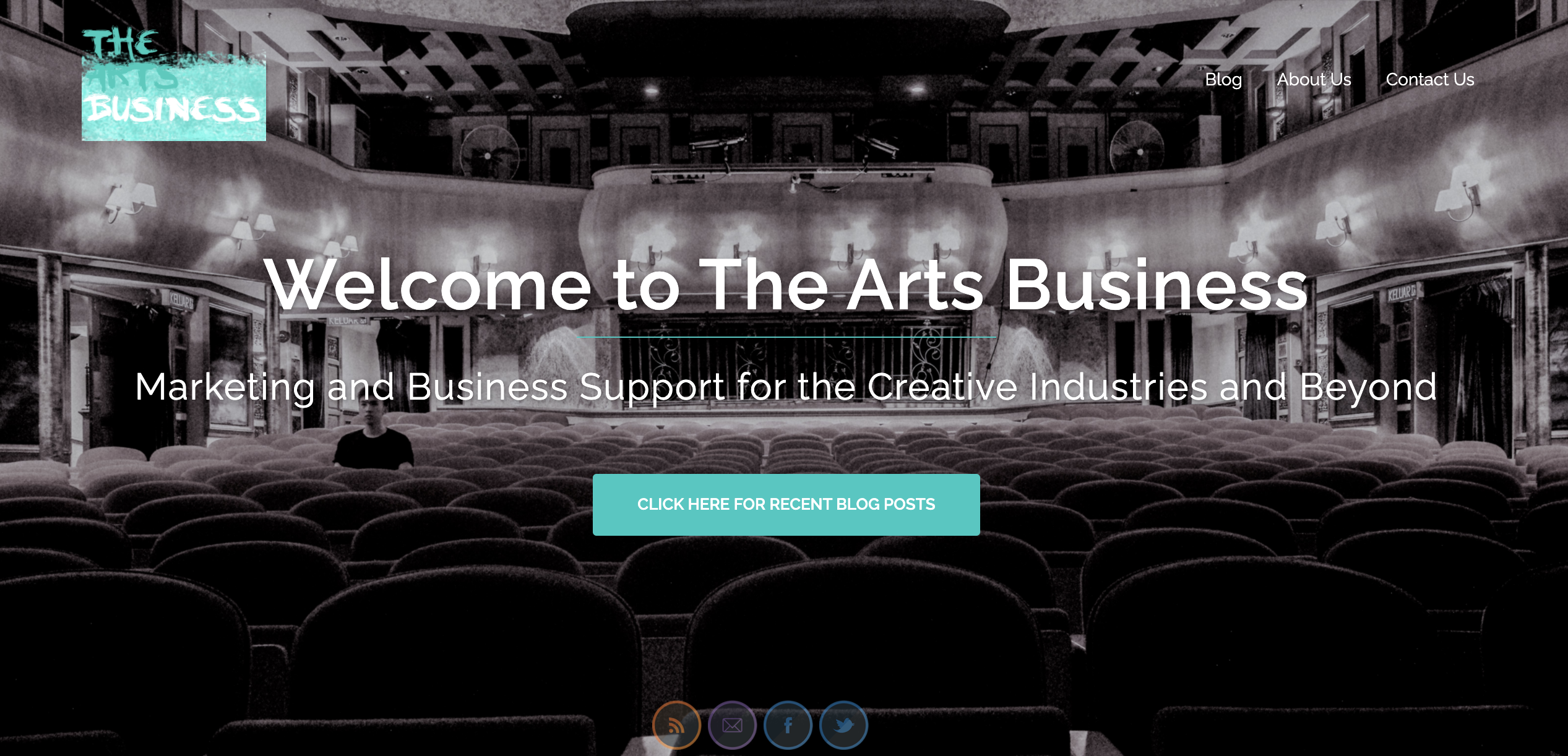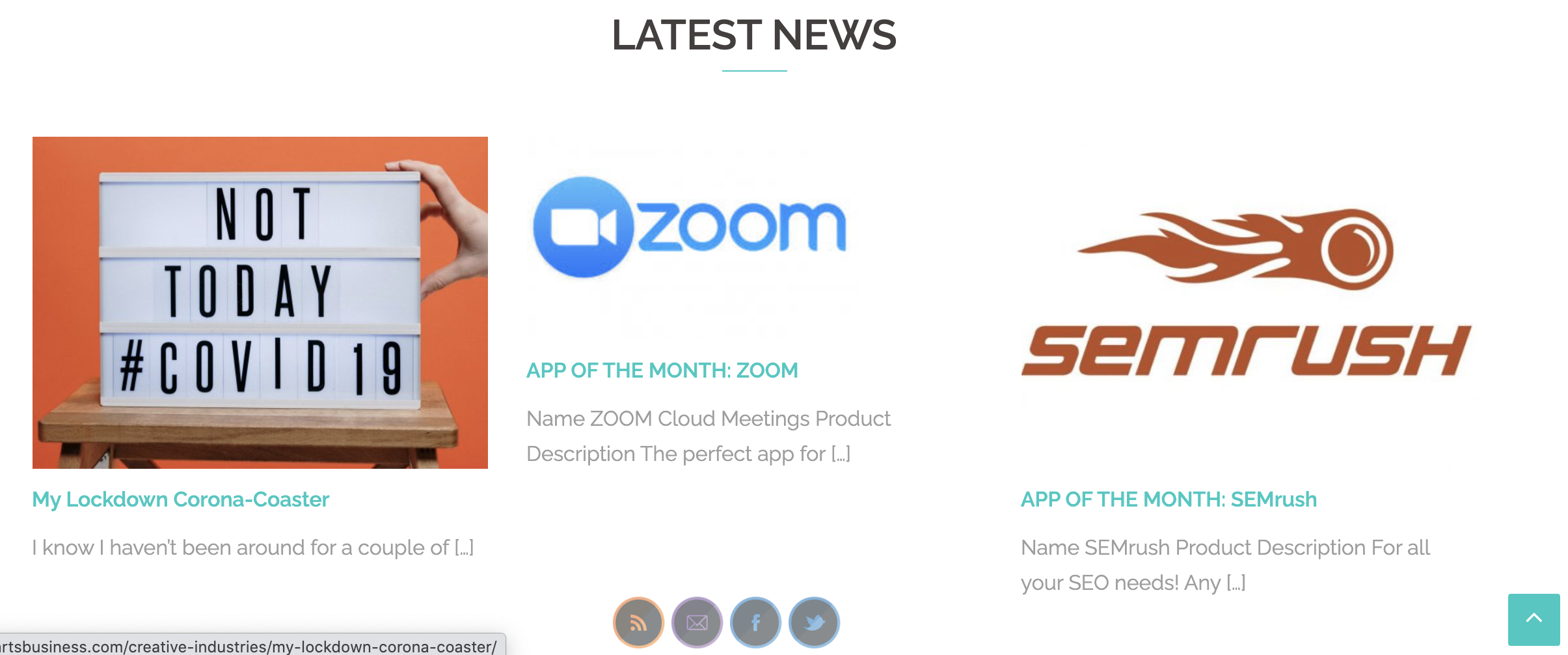STEP 2: REFINE
Let’s start at the very beginning, a very good place to start.

- YOUR HOMEPAGE
And the very beginning of your website is your homepage!

This is generally the first impression people will get of your website and business therefore you want to make sure it is clear from the offset exactly what it is you do. You also want to make sure it’s aesthetically pleasing and easy to interact with.
There is a super cool feature on Google Analytics where you can bring up an image of your homepage to figure out exactly how users are interacting with you site so you can learn what’s working and what’s not. (Don’t worry, I will be doing some Google Analytics posts in the near future!) It will also illustrate where they aren’t clicking. These are the areas you want to improve.
- CALL TO ACTION
Do you have a call to action button on your home page? This is a link which you draw attention to as somewhere you really want people to click. Facebook pages have a call to action button in the top bar which you can set to engagements like:
- Contact Us
- Subscribe Now
- Donate Now
- Check Out Website

As you can see the call to action button stands out over the other places you can click on the page, but it is still in keeping with your company branding.
Are you trying to sell tickets? Consider a prominent What’s On Button. Running a blog? Get people to check out your latest posts. Building an email database for future project? Have a Subscribe to our Newsletter. You get the point.
You don’t have to limit call to action buttons to your homepage either. If you have a page dedicated to a specific show or exhibition you may want to put a call to action button that says ‘Buy Tickets’ to encourage users to take the next step. Do you have some exciting news? Add a share now button to enable people to upload a link to your news straight onto their social media.
- SOCIAL MEDIA
It’s a good idea to ensure your links to social media are visible too. Social Media is such an inherent part of people’s lives with the average user spending 2 hours 24 minutes on it daily according to TechJury. So ideally you want your audience to be able to find it wherever you are on the site. I like to put it both in the header and footer so that your visitors can find your social wherever they are on the website along with including share options on posts.
You want to consider adding call to action buttons or statements like ‘Join Us’ or ‘Share Here’ to encourage continued interaction.
I’ll talk more about making links in Step 3 next month. (That’s right, links are so integral they get their own section!)
Remember, social media is one of the best ways to organically grow your company so add it in whenever you can.
- LOAD TIME

The other key feature about your homepage is how long it takes to load. We live in a widely impatient society and, on average, if your load time is longer than seven seconds, you’ll lose a third of your visitors, crazy right?
How can you make your site load faster? To start with if you have images or videos on your homepage you may want to consider lowering the file size or video resolution. If you have built your site through WordPress there are plugins that will help your pages load quicker to. The best free plugin I’ve found is called WP Fastest Cache. It has a ridiculously easy set up that will immediately increase that website load time and decrease your bounce rate!
- COMPANY TAGLINE
Have you come up with a slogan or tagline for your business yet? You know, like ‘McDonalds – I’m lovin’ it’ or ‘Nike – Just do it’, well sort of anyway.
When you are considering your company tagline be sure to keep your these in line with your keyphrases and keywords. For example, The Arts Business Tagline is:
‘Marketing and Business Advice for the Creative Industries and Beyond…’
I’ve got marketing and business in there so that will help my instructional blogposts rank and ‘Creative Industries’ will help me hit up the right area of work. It’s working both for my business and my SEO.
Your tagline can appear all over you site without being perceived by Google as spam! Obviously, don’t over do it, us it sparingly and appropriately.
- BLOGPOSTS
Believe it or not Blogs are still the best way to boost your SEO.

Google’s bots are designed to consume text-based content and since AI hasn’t evolved enough to understand the content in videos or photos (not yet anyway) it means that writing is still one of the only ways to properly improve your search engine position.
You don’t need to name it ‘Blog section’ or anything, I know it can be a little difficult to slot this in seamlessly to your website without contrasting with your brand (unless you are a blog). So, jazz it up a little. It could be where you upload news or stories as well.
When writing your blogposts make sure you’re always thinking about how to pull together your article and your keywords and keyphrases.
The length of your blogposts is heavily debated. If you’re looking for a ballpark figure, make sure you keep it between 300-400 words as a bare minimum and 700-800 as an average.
You may think that surely the longer the blogpost the better, but remember you want to keep people engaged with your site and a ten thousand word essay on ‘How to Thread a Sewing Machine’ is unlikely to ever be read from start to finish.
If you’re struggling to think up new content for your blog there are plenty of places to find inspiration:
- Start by bringing it back to you and your company. What is your USP (Unique Selling Point)? The reason you started your business. That something, something you have that no other company does. Maybe you’re the only children’s theatre company that teaches comedy in the UK. Develop content around that. Think autobiographical too, don’t be afraid to share your story if it is relevant to your business, after all so much of your business is about the entrepreneur who began it.
- Another great place to find content ideas is to have a cheeky stalk of what your competitors are writing about. You can pull content directly from their posts (not in a plagiarism way FYI, find your on spin on it). Maybe they’ve written a post about the best 10 monologues for actor’s straight play auditions. You could write 11!
- You should also look at what is currently trending in your industry or just in the world that could affect your business. Maybe there’s a new technology that could revolutionise your production, or maybe there’s a mass pandemic which has closed down the world… Whatever it is just make sure you stay ahead of the curve so that your content is current and interesting. This will play into favour for your SEO.
- Think about guests posting on your blog. You could pay them, or trade services or even sell it to them as an incredible idea to reach a wider audience. Not only is this true but, in trade off, it will also help you reach more people. You are essentially tapping into each other’s database of followers and getting seen by a different crowd.
I know I rant on about this, but consistency is so so so so so important, especially when you are establishing yourself in the arts and you have limited time and resources.
So, don’t start off all guns blazing posting three article a day if this isn’t something you can maintain. Both Google and your followers will think you’ve disappeared and hence your ranking will go down. Start once or twice a month. Remember, as your business grows so will your resources, and if your resources build you can increase your content. As far as I know Romeo and Juliet wasn’t written in a day.
Think carefully about each of the titles of your blog posts too. Think about that alluring clickbait that gets you every time (I myself am a sucker for: Child Actors: What do they look like now?). You want people to spend as much time on your site as possible so make your titles seductive.
I like to think of Buzzfeed as my muse when I’m coming up with titles for my posts. I can spend hours lost under their listicles spell. Basically, you want your articles to catch the gaze of your audiences and encourage them to read more.
Really not getting the traction you want with your titles?
Consider A/B testing.
This is when you set up two versions of your article with exactly the same content but different titles. This will help to give you an idea of what style of titles grabs more attention. The longer people stay on your site the better your google ranking so you really wanna home in on this.
Finally, you want to encourage as much interaction with your blog as possible so think about adding share now buttons to each post for whatever social media platforms you’re on. This way they are linking to you from a different site increasing your audience and SEO.
Think about turning on the ability for users to add comments or reviews to your posts too. It increases interaction with your page and produces new content without you having to write it.
If you are worried about trolls then heed this top tip (which I will admit is from RuPaul):

Don’t block trolls, they’re sneaky and it will simply rile them up more. Just silence or hide them. That way you can’t see them! And I like the idea of them being off in cyberspace somewhere having a rant to themselves!
- UPDATES
Updating your page is also a great way to improve SEO. Another excellent reason why adding new pages for blogposts is so useful. Frequent updates on your website and social media shows Google that you are active, dressed up and ready to party.
There are countless possibilities for adding content that isn’t a blog post. Things like adding customer quotes or stories, embedding videos, creating online galleries… let your imagination run wild.
If you’re just starting off and building your own website there are some people out there who would recommend you hide yourself from search engine bots until you’re up and running, rather than have them see it incomplete… well they are wrong.
FOLLOW THIS ADVICE INSTEAD…
Set yourself up a landing page. This will act as an advert for your new company. You can include links to your social media here and a subscribe now button so that customers will be able to be the first to visit your website when it’s up and running with the added bonus that you start to build yourself up an email database.
Then start to create your website in the background.
If your website needs a fresh new look you can use this nugget of wisdom too. By building your website ‘behind the scenes’ it means that your customers can’t find your new pages and get distracted by half finished, unformatted pages, judging your professionalism by these standards. But just because your customers can’t see work doesn’t mean Google can’t.
Search engines love it when you upload new content, and when else are you uploading more content than when you’re setting up or updating your website! That’s the time that everything is new (and shiny). Those bots will eat up the new information and spit you out higher in their results.
Remember to keep reintroducing keywords and keyphrases in your updated content. But don’t take the mick! For example, some scallywags out there would encourage you to do things like put white text on white background repeating your keyphrases over and over. This may trick the bots for a while, providing quicker ranking results but once they’re onto you, you will be punished by plummeting down the ranks where you’ll be so low it’ll take most your life to climb back up that ladder.
That’s right… Google knows EVERYTHING.
I know that was a lot of information to throw at you in one go! That’s why I’ve split step 2 into two posts! I don’t want to completely overwhelm you!
So, come back in a couple of weeks for the next instalment!
Any questions or want use to create an SEO plan for you? Contact us or leave a message in the comments.

